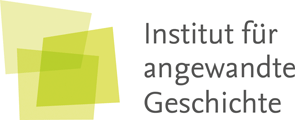
Because of some reconstruction of our homepage, the learning materials are not available for downloading at the moment, but can be sent to you via e-mail. Please write us at info[at]instytut.net.
Intercultural Learning for Groups
Learning sites give an opportunity to explore the german-polish border region independently. The learning materials offer enable groups from both countries to deal with history in the present. Traces do not speak for themselves. They stand for stories that cannot be told by locals any more. Therefore the materials were developed to convey basic information, questions and options for activities.
The three presented modules are the result of a pilot project from winter 2010 and 2011. The project consisted of exploring learning sites in intercultural groups from Germany and Poland together with students of the Europe-University Viadrina. The materials are available for use – we would be happy about feedback! We are also available for professional support of your projects.
How does a history city rally work?
Jewish Frankfurt (Oder)
Jews from Frankfurt lived on both sides of the Oder and meanwhile Stumbling Blocks have been installed in Frankfurt (Oder) and in Slubice, representing the stories of local citizens. A walk through these sites should give an overview of the jewish history of the city. Local elements are thereby connected with biographies.
Autobahn, Village and Concentration Camp:
The „Education labourcamp Oderblick“ in Schwetig / Świecko
This place connects the history of national socialist pursuit, the systematic use of forced labour, building the Autobahn between Berlin and Warsaw and the resurrection of the village community. Świecko is a small polish village its population coming from the destroyed village of Schwetig after 1945. Before, the people were living close to a labour camp called “Oderblick”. Inmates from all over Europe were being held there and forced to heavy work on a highway bridge.
Pompeji vor all: The New old City of Kostrzyn and the decline if the fortress Küstrin
The presence of history can be experienced with ones own eyes, at the fortress of Kostrzyn. Every senior and every child can understand the aftermath of the Second Worl War. This place is special because the destroyed buildings of 1945 have not been reconstructed but removed. The results of this decision can be seen today. In Kotrzyn one can learn about prussian history, the march on Berlin but also about the difficulties of living for newcommers after 1945.
Project coordination
Magdalena Abraham-Diefenbach, m.abraham@instytut.net
Scientific supervision
Dr. Felix Ackermann | Jakob Ackermann
funded by
Brandenburgische Landeszentrale für politische Bildung (Brandenburg center for political education)
Heinrich-Mann-Allee 107, 14473 Potsdam
www.politische-bildung-brandenburg.de

